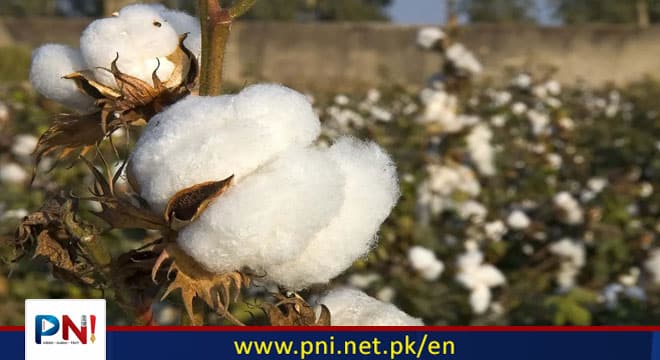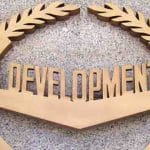BEIJING, Dec 6 (APP): “Our cotton consumption still falls short of achieving complete self-sufficiency, leading our company to consider importing cotton. In the future, we plan to collaborate with leading cotton-producing nations globally, tailoring our partnerships based on specific variety requirements,” said Ms. Zhang Yan, the interim CEO of WinnerMedical.
“While we do not directly procure from cotton farmers, our approach primarily involves utilizing platforms like China Cotton to select the most suitable global supply chains. Collaboration with major cotton-producing nations like Pakistan is entirely feasible,” she said at the conclusion of the inaugural China International Supply Chain Promotion Expo, in an interview with China Economic Net.
As a leading Chinese cotton product manufacturer, in response to the national “Belt and Road” initiative, the Winner Group has expressed strong interest in collaborating with cotton-producing giants like Pakistan, extending its trade network worldwide.
Pakistan’s domestic cotton industry faces various challenges, including the need for research and development of high-quality cotton varieties and innovative approaches to cotton product manufacturing. The entry of foreign enterprises’ investment may pave the way for a new chapter in the country’s cotton sector.
Pakistan ranks as the world’s fifth-largest cotton producer and the third-largest consumer, proudly holding the title of the globe’s premier cotton yarn exporter. With the easing of the COVID-19 pandemic, there has been a notable upswing in Pakistan’s cotton harvest this year, witnessing an impressive 81% year-on-year increase. However, despite this surge in production, the country finds itself compelled to import cotton bales to meet the ever-growing demands of its textile industry. Sajid Mahmood, a representative of the Commercial Club Goods Company, expressed skepticism about the nation’s ability to meet its annual production targets this year. He highlighted adverse weather conditions and a severe onslaught of cotton pests, particularly the whitefly, as significant factors contributing to the decline in yield.
In tackling this challenge, there’s valuable insight to be drawn from the collaborative efforts between Chinese enterprises and academic institutions. Taking Winner Group as a prime example, its subsidiary, Purcotton, has joined forces with Huazhong Agricultural University’s National Key Laboratory of Crop Genetic Improvement to establish a Cotton Research Institute. This institute actively engages in the development and cultivation of improved cotton varieties. Presently, the brand collaborates with cotton breeding experts, establishing a cotton base in Hainan to cultivate the exclusive cotton variety “Purcotton 1.”
Perhaps, the success stories from China can inspire similar advancements in Pakistan.
Pakistan faces ongoing challenges in its foreign exchange reserves and needs expanding exports, particularly of products like cotton and cotton yarn, to generate foreign exchange and prevent national bankruptcy. Currently, as a major raw cotton exporter, Pakistan could enhance its economic standing by not only increasing yield per hectare but also by introducing a mature cotton product manufacturing chain, shifting from raw material exports to cotton product exports.
“In the course of our company’s development, the most straightforward and beneficial lesson has been learning from and aligning with outstanding individuals. When our industry was not yet well-established, seeking collaboration with exceptional partners and learning from them was the method that propelled our rapid development,” shared Zhang Yan with reporters.
“Over the decades of our cotton product development, we have received substantial assistance from many internationally renowned enterprises. They inspired us in the early stages of product research and development, quality control, and final product standards. Combined with our in-house research and dedication, we transformed from a small manufacturer into a brand. This journey perhaps provides a blueprint for our cooperation within the framework of the China-Pakistan Economic Corridor. ”
In 2005, Winner Medical innovated the all-cotton water-punched non-woven fabric technology, hailed as a “great innovation in the textile industry.” This innovation not only significantly saved energy consumption, enhanced land economic efficiency but also achieved a dual increase in economic and social value. Over the 14 years since the founding of Purcotton, they have procured 250,000 tons of cotton, boosting Xinjiang’s cotton planting area by 53% and increasing production by 95%. The sale of over 58.22 million pieces of all-cotton clothing and bedding reduced pollution resulting from equivalent synthetic fiber processing. The sale of 57.7 billion pieces of all-cotton towels also contributed to a reduction in extensive tree logging. Many deserts in Xinjiang, unsuitable for growing food, have transformed into oases due to cotton cultivation, bringing ecological and economic value to numerous households.
Since its inception, Winner Group, through the dual brands “Winner Medical” and “Purcotton,” has constructed a unique business model in the global cotton industry. It stands as one of the few large health enterprises that have achieved “end-to-end connectivity of the cotton cultivation and production chain.” Initiating comprehensive cooperation in cotton planting and production between China and Pakistan may offer new opportunities for increasing cotton yields in Pakistan and boosting foreign exchange through cotton product exports.
Follow the PNI Facebook page for the latest news and updates.








